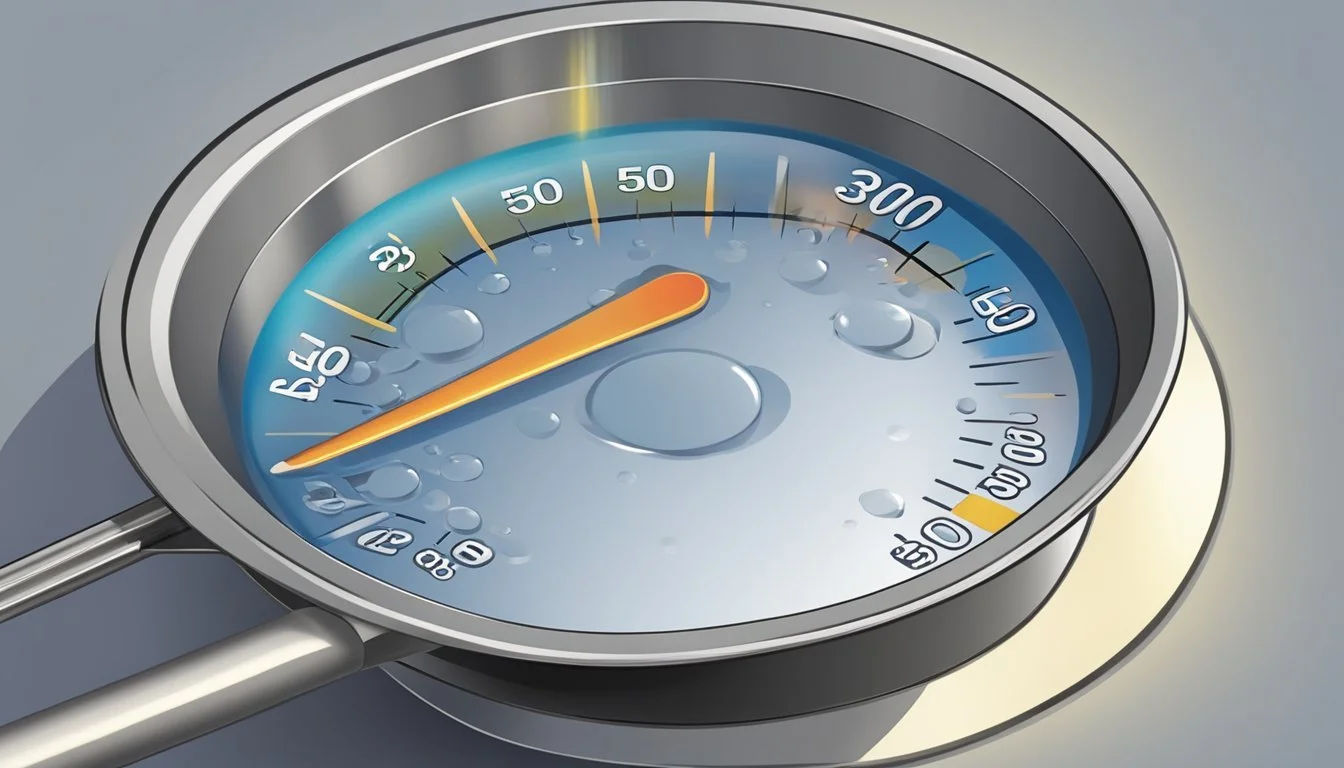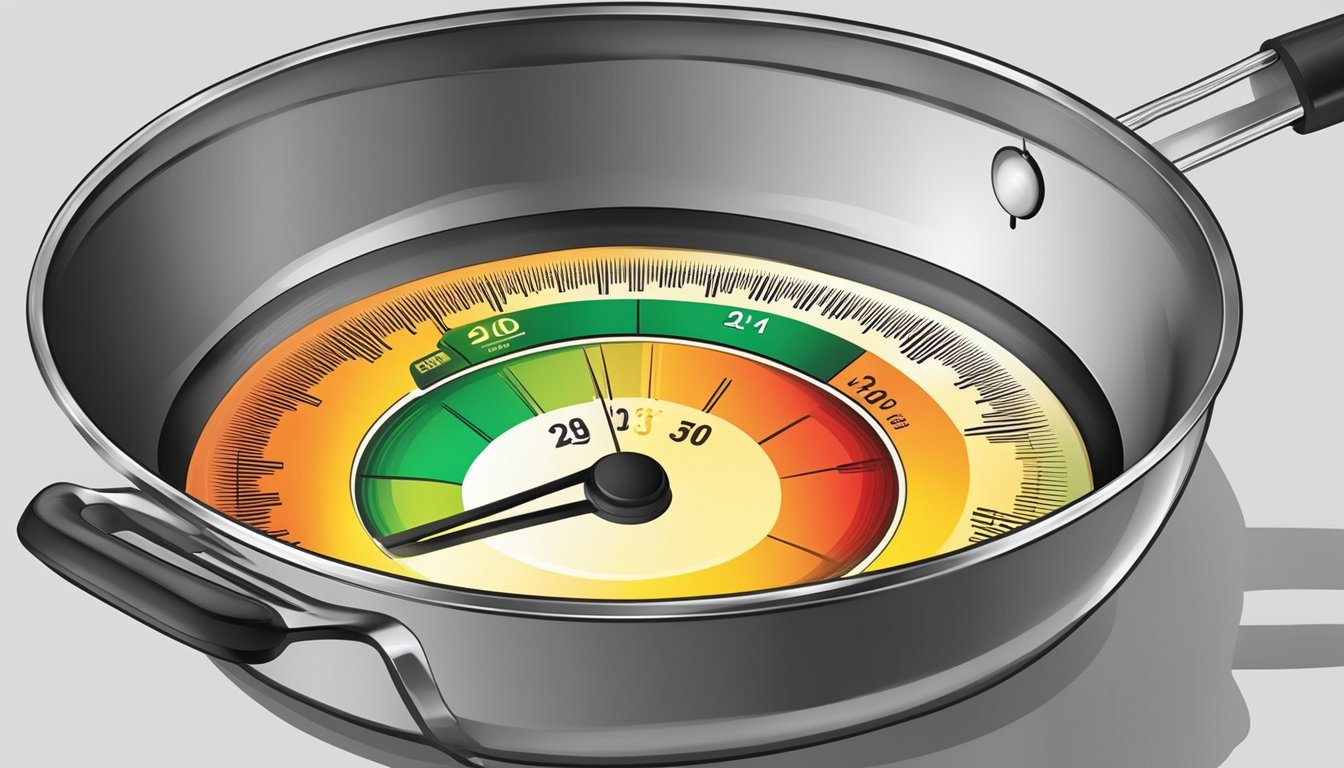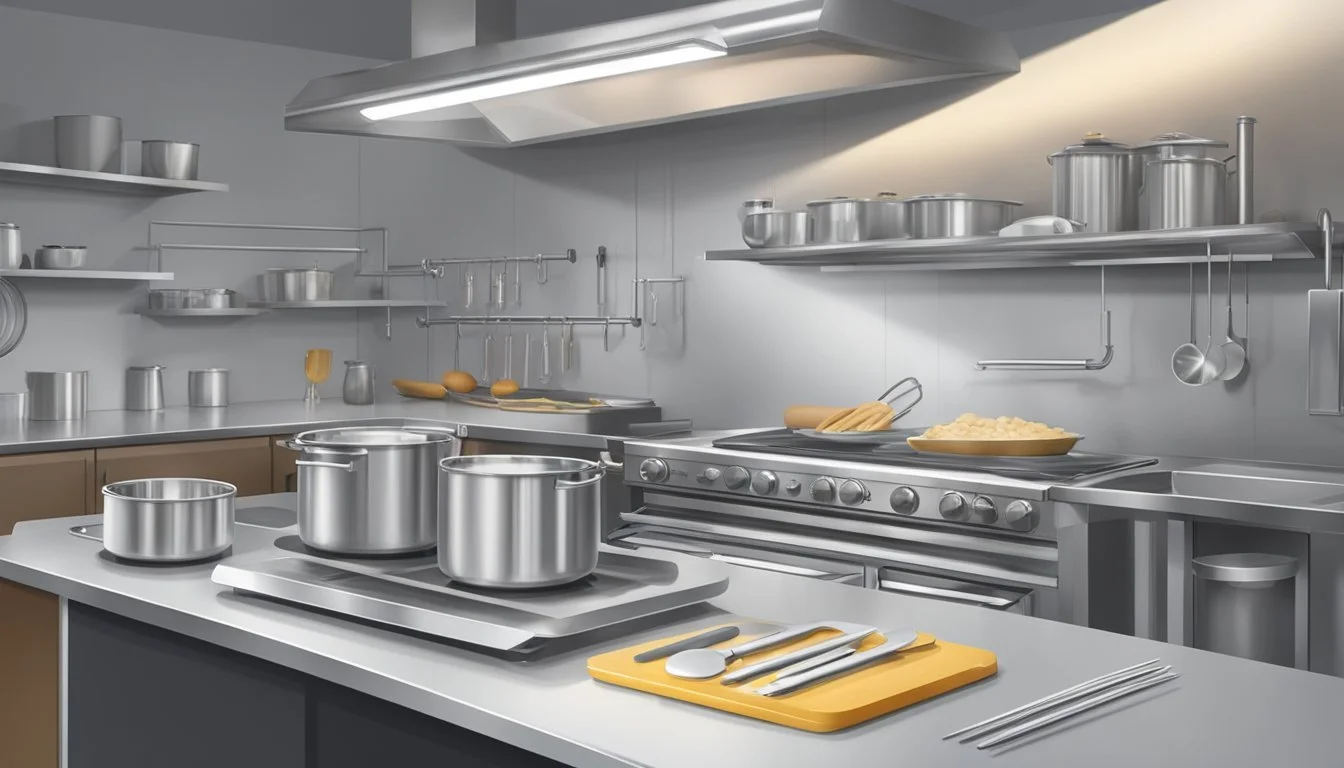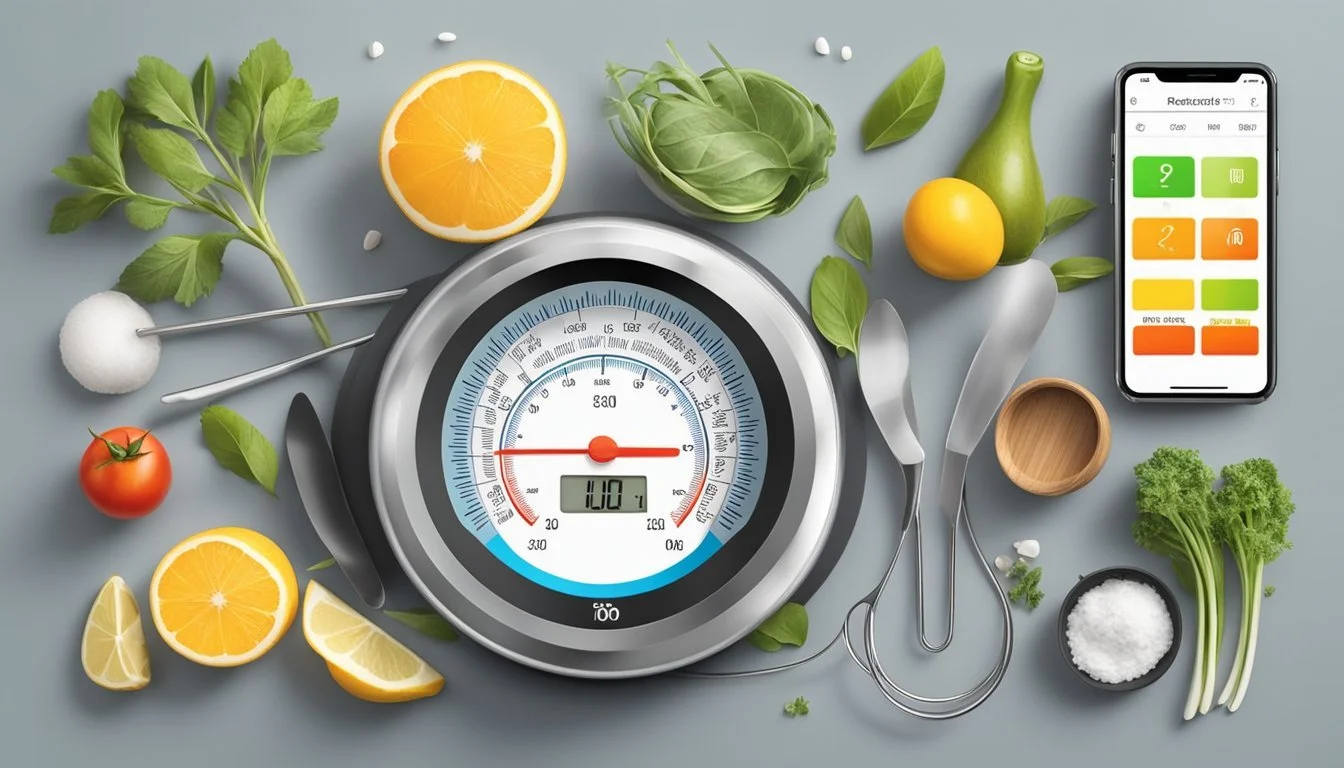Choosing and Using the Right Cooking Thermometer
A Guide to Precise Temperature Control
Cooking thermometers are essential tools for any kitchen, ensuring food safety and perfect results every time. These devices measure the internal temperature of foods, helping cooks achieve desired doneness and prevent undercooking or overcooking. A reliable cooking thermometer can make the difference between a perfectly cooked meal and a potential food safety hazard.
Various types of thermometers cater to different cooking needs. Instant-read thermometers provide quick temperature readings for meats and other dishes, while leave-in probe thermometers monitor food throughout the cooking process. Specialized thermometers exist for specific tasks like candy-making, deep-frying, and oven temperature verification.
When selecting a cooking thermometer, consider factors such as accuracy, speed, durability, and ease of use. Digital models often offer precise readings and additional features like temperature alerts. Proper use and calibration of cooking thermometers ensure consistent results and help maintain food safety standards in both home and professional kitchens.
Types of Cooking Thermometers
Cooking thermometers come in various designs to suit different culinary needs. Each type offers unique features for accurate temperature measurement across diverse cooking methods and foods.
Digital Thermometers
Digital thermometers provide quick and precise temperature readings on an easy-to-read LCD display. They often feature a thin probe that can be inserted into food without causing significant heat loss.
Many digital models offer programmable temperature alerts and timer functions. These thermometers are versatile, suitable for meats, liquids, and baked goods.
The Thermapen One is a popular digital thermometer known for its fast readings and accuracy within ±0.5°F.
Analog Thermometers
Analog thermometers use a dial display with a temperature-sensitive probe. They are typically less expensive than digital models but may take longer to provide readings.
These thermometers are often oven-safe and can remain in food during cooking. They're ideal for roasts, turkeys, and other large cuts of meat.
Analog thermometers require periodic calibration to maintain accuracy.
Probe Thermometers
Probe thermometers feature a long, thin metal probe connected to a digital display unit by a heat-resistant cable. The probe is inserted into food before cooking, allowing continuous temperature monitoring without opening the oven door.
Many probe thermometers offer programmable temperature alerts. They're excellent for roasts, turkeys, and smoker cooking.
The Thermoworks Chefalarm is a high-quality probe thermometer with a wide temperature range and customizable alarms.
Oven Thermometers
Oven thermometers are designed to measure the internal temperature of ovens. They help ensure accurate oven temperatures for consistent cooking results.
These thermometers can be hung from oven racks or placed on a flat surface inside the oven. They're particularly useful for older ovens or those with unreliable built-in thermostats.
Oven thermometers typically have large, easy-to-read dials visible through the oven door.
Instant-Read Thermometers
Instant-read thermometers provide quick temperature readings in seconds. They're not designed to stay in food during cooking but are ideal for spot-checking temperatures.
These thermometers are versatile, suitable for meats, baked goods, candies, and deep-frying. They often have thin probes to minimize insertion marks in food.
Many instant-read thermometers are water-resistant or waterproof for easy cleaning.
Leave-In Thermometers
Leave-in thermometers are designed to remain in food throughout the cooking process. They come in both analog and digital varieties.
These thermometers are ideal for roasts, turkeys, and other large cuts of meat. Many models feature oven-safe probes and cables for continuous monitoring.
Some leave-in thermometers have dual probes to measure both meat and oven temperatures simultaneously.
Wireless Thermometers
Wireless thermometers offer remote temperature monitoring via Bluetooth or Wi-Fi connectivity. They typically consist of a probe and a separate receiver or smartphone app.
These thermometers allow cooks to monitor food temperatures from a distance, making them ideal for grilling, smoking, or oven roasting.
The Meater is a popular fully wireless thermometer with internal and ambient temperature sensors. It connects to smartphones for easy monitoring and temperature alerts.
Understanding Temperature and Doneness
Cooking thermometers are essential tools for achieving precise doneness in meats and baked goods. Proper temperature measurement ensures food safety and optimal taste.
Meat Thermometer Usage
Insert the thermometer probe into the thickest part of the meat, avoiding bone or fat. For larger cuts, check multiple spots. Wait a few seconds for the reading to stabilize before checking the temperature.
Rare: 125°F (52°C)
Medium Rare: 135°F (57°C)
Medium: 145°F (63°C)
Medium Well: 150°F (66°C)
Well Done: 160°F (71°C)
Remove meat from heat 5-10°F below target temperature, as it will continue cooking while resting. This carryover cooking effect is crucial for achieving desired doneness.
Poultry Temperature Guidelines
Poultry requires higher internal temperatures to ensure food safety. Cook chicken, turkey, and duck to a minimum of 165°F (74°C) in the thickest part of the thigh and breast.
For whole birds, insert the thermometer into the inner thigh near the breast, avoiding bone. Check multiple areas to ensure even cooking.
Poultry Safe Temperatures:
Whole Bird: 165°F (74°C)
Ground Poultry: 165°F (74°C)
Breasts: 165°F (74°C)
Let poultry rest for 3-5 minutes after cooking to allow juices to redistribute and temperature to stabilize.
Baking and Roasting Specifics
Baking and roasting often require different temperature approaches than meat cooking. Use an oven thermometer to verify accurate oven temperature.
For bread, internal temperature indicates doneness:
Lean breads: 190-210°F (88-99°C)
Enriched breads: 180-190°F (82-88°C)
Cakes typically reach doneness at 200-210°F (93-99°C) internal temperature. Insert the thermometer into the center, avoiding the bottom of the pan.
For roasted vegetables, aim for fork-tenderness rather than specific temperatures. Roast meats to desired doneness using the meat temperature guidelines.
Features and Functionality
Cooking thermometers offer a range of capabilities to ensure precise temperature measurements. These devices vary in their temperature ranges, accuracy levels, response times, and additional features like alarms.
Temperature Range
Most cooking thermometers cover a wide temperature spectrum, typically from -50°F to 550°F (-45°C to 288°C). This range accommodates various cooking methods, from freezer checks to high-heat grilling.
Some specialized thermometers extend beyond this range. Candy and deep-fry thermometers, for instance, can measure temperatures up to 400°F (204°C) or higher.
For everyday cooking, a thermometer with a range of 32°F to 392°F (0°C to 200°C) is usually sufficient. This covers most cooking applications, including roasting, baking, and sous vide.
Accuracy and Precision
Accuracy is crucial for cooking thermometers. High-quality models offer accuracy within ±0.7°F (±0.4°C). This precision is essential for delicate dishes and food safety.
Many thermometers undergo calibration before sale. Some allow user calibration to maintain accuracy over time. Regular calibration checks using ice water (32°F/0°C) or boiling water (212°F/100°C at sea level) help ensure continued precision.
Digital thermometers often provide more accurate readings than analog models. They typically display temperatures to the nearest 0.1°F or 0.1°C, offering greater precision for critical temperature control.
Speed and Response Times
Modern digital thermometers boast rapid response times. Top-tier instant-read thermometers can provide accurate readings in 2-3 seconds. This quick response is valuable when checking multiple dishes or monitoring fast-cooking foods.
Thermocouple thermometers offer the fastest response, often under 1 second. These are ideal for professional kitchens or high-volume cooking.
Slower thermometers, like traditional dial types, may take 15-20 seconds to stabilize. While less convenient, they remain useful for dishes with longer cooking times.
Alarm Systems
Many digital thermometers feature programmable alarms. Users can set target temperatures, and the device alerts them when the food reaches that point. This feature is particularly useful for roasts, grills, and smokers.
Some models offer dual alarms: one for the target temperature and another for a maximum temperature. This helps prevent overcooking and ensures food safety.
Advanced thermometers may include customizable presets for different types of meat. These presets automatically set alarms based on USDA-recommended temperatures for various levels of doneness.
Wireless thermometers allow remote monitoring. They send alerts to smartphones or separate receivers, enabling cooks to multitask while keeping an eye on cooking progress.
Practical Usage and Applications
Cooking thermometers are versatile tools with applications across various culinary techniques. They ensure food safety, precision, and optimal results in grilling, candy-making, beverage preparation, and deep-frying.
Grilling and Barbecue Techniques
Accurate temperature readings are crucial for grilling and barbecue. A thermometer helps achieve desired doneness for different meats. For chicken, insert the probe into the thickest part, aiming for 165°F (74°C).
Steaks require different temperatures based on preference:
Rare: 125°F (52°C)
Medium: 140°F (60°C)
Well-done: 160°F (71°C)
For pork, target 145°F (63°C) with a 3-minute rest. Thermometer-fork combinations are convenient for grilling, providing quick readings in 2-10 seconds.
Candy-Making and Confectionary
Precise temperature control is essential in candy-making. Different sugar stages correspond to specific temperatures:
Soft Ball: 235-240°F (113-116°C)
Hard Ball: 250-265°F (121-129°C)
Soft Crack: 270-290°F (132-143°C)
Hard Crack: 300-310°F (149-154°C)
A candy thermometer helps achieve the desired consistency. For caramel, heat sugar to 340°F (171°C) for a golden color. Fudge requires heating to 234-237°F (112-114°C) for the perfect texture.
Beverages and Liquid Temperatures
Thermometers play a vital role in beverage preparation. For coffee, water temperature affects extraction:
Pour-over: 195-205°F (90-96°C)
French press: 200°F (93°C)
Tea steeping temperatures vary:
Green tea: 160-180°F (71-82°C)
Black tea: 200-212°F (93-100°C)
In mixology, chilled cocktails typically aim for 32-40°F (0-4°C). For mulled wine, maintain a gentle simmer at 160-180°F (71-82°C) to preserve flavors and alcohol content.
Deep-Frying and Oil Temperatures
Proper oil temperature is critical for deep-frying. Most foods fry optimally between 350-375°F (175-190°C). Chicken requires 350°F (175°C), while french fries need 375°F (190°C) for a crispy exterior.
Use a thermometer to monitor oil temperature:
Insert probe into oil, avoiding contact with the pot.
Maintain consistent heat for even cooking.
Allow oil to reheat between batches.
For tempura, a lower temperature of 340-360°F (171-182°C) ensures a light, crispy batter. Adjusting heat based on thermometer readings prevents greasy or undercooked food.
Design and Build Quality
Cooking thermometers come in various designs with features tailored for different culinary needs. The construction and materials used significantly impact their performance, durability, and user experience.
Probe Length and Material
Probe length varies from 2 to 8 inches, with longer probes ideal for large roasts. Stainless steel is the most common material due to its durability and heat resistance. Some high-end models use thermocouple sensors for faster readings.
Probes with thin tips minimize juice loss when inserted into meats. Foldable probes offer convenience and safety during storage. Many thermometers feature rotating probes for easy angle adjustments when measuring food temperatures.
Display and Readability
LCD displays are standard, with sizes ranging from 1 to 3 inches. Backlit screens enhance readability in low-light conditions. Some models offer color-coded displays for quick temperature assessment.
Digital readouts provide precise measurements, often to the tenth of a degree. Larger digits improve visibility from a distance. Certain thermometers include rotating displays, allowing users to read temperatures from various angles.
Durability and Warranty
Water-resistant designs protect against splashes and spills. IP67 ratings indicate full waterproofing, suitable for outdoor cooking. Shatterproof casings guard against accidental drops.
Warranty periods typically range from 1 to 3 years. Premium brands may offer lifetime warranties. Look for thermometers with easy-to-replace batteries to ensure long-term usability.
Extras
Magnets allow attachment to metal surfaces for convenient storage. Pot clips secure probes to pan edges when monitoring liquids. Some models include storage cases for protection and organization.
Programmable alarms alert users when target temperatures are reached. Multi-probe designs enable simultaneous monitoring of multiple dishes. Bluetooth connectivity allows remote temperature tracking via smartphone apps.
Maintenance and Care
Proper upkeep of your cooking thermometer ensures accurate readings and longevity. Regular cleaning, careful storage, and periodic checks are essential for maintaining its performance.
Cleaning and Storage
Clean your thermometer after each use to prevent cross-contamination. Wipe the probe with hot, soapy water and rinse thoroughly. For stubborn residue, use a soft cloth or sponge. Avoid submerging digital thermometers in water.
Sanitize the probe with alcohol wipes or a diluted bleach solution for added food safety. Dry the thermometer completely before storage.
Store your thermometer in a protective case or sheath. Keep it in a cool, dry place away from extreme temperatures and humidity. Avoid storing it near hot appliances or in direct sunlight.
Battery Life and Replacement
Most digital thermometers use standard button cell batteries. Check the battery level regularly, especially before important cooking tasks.
Replace batteries when the display becomes dim or erratic. Some models have a low battery indicator. Keep spare batteries on hand to avoid interruptions during cooking.
To replace batteries, locate the compartment (usually on the back or handle). Use a small screwdriver to open it. Insert new batteries according to the correct polarity.
Calibration and Accuracy Checks
Perform accuracy checks every few months or if you suspect misreadings. Use the ice water method: fill a glass with ice and add water. Insert the probe and wait for the reading to stabilize. It should read 32°F (0°C).
For a boiling water test, bring water to a full boil. The thermometer should read 212°F (100°C) at sea level.
If readings are off, consult your user manual for calibration instructions. Some models have a calibration button or nut for adjustments. Professional calibration may be necessary for high-precision needs.
Innovations and Smart Features
Modern cooking thermometers have evolved significantly, incorporating advanced technologies to enhance functionality and user experience. Smart features and connectivity options have revolutionized how home cooks and professionals monitor food temperatures.
Smartphone Integration and Apps
Smart thermometers now seamlessly connect to smartphones via Bluetooth or Wi-Fi. Companion apps provide real-time temperature readings and alerts. Users can set target temperatures and receive notifications when food is ready.
Some apps offer preset cooking programs for different meats and dishes. These guide users through the cooking process with step-by-step instructions. Advanced features may include temperature graphing and cooking history logs.
Many apps also provide recipe databases and cooking tips. This integration turns a simple thermometer into a comprehensive cooking assistant.
Connectivity and Range
Wireless thermometers have greatly improved in terms of connectivity range. Models like the Meater Plus boast extended ranges up to 165 feet. This allows users to monitor cooking from a distance.
Some thermometers use Wi-Fi to transmit data, enabling monitoring from anywhere with an internet connection. This is particularly useful for long cooking sessions or when users need to leave the house.
Dual-mode connectivity, combining Bluetooth and Wi-Fi, offers flexibility and reliability. Users can switch between modes depending on their needs and location.
New Developments in Thermometer Tech
Recent innovations include multi-probe systems that can monitor several dishes simultaneously. These are ideal for large meals or professional kitchens.
Ultra-thin probes, some as small as 4.8 mm in diameter, minimize juice loss when inserted into food. This helps maintain food quality and accuracy of readings.
High-heat resistant probes can withstand temperatures up to 752°F, making them suitable for grilling and smoking. Some models feature internal and ambient temperature sensors for precise control.
Advancements in battery technology have led to longer-lasting thermometers. Some can operate for up to 40 hours on a single charge, reducing the need for frequent recharging.
Selecting the Right Cooking Thermometer
Choosing an appropriate cooking thermometer is crucial for ensuring food safety and achieving optimal results in the kitchen. Different types of thermometers excel in various cooking scenarios.
Factors to Consider
Accuracy is paramount when selecting a cooking thermometer. Look for models with a precision of ±1°F or better. Speed is another key factor, especially for instant-read thermometers. The best options provide readings in 2-3 seconds.
Temperature range is important. For general cooking, a range of 0°F to 400°F (-18°C to 204°C) is sufficient. Durability matters too. Opt for water-resistant models with sturdy probes.
Consider ease of use. Digital displays with large, clear numbers are preferable. Some advanced models offer additional features like temperature hold and min/max temperature tracking.
Best Thermometer for Different Foods
For meats, the ThermoPop 2 is an excellent choice. It provides quick, accurate readings and has a rotating display for easy viewing at any angle.
When making candy or deep-frying, the Polder Classic Combination Thermometer is ideal. Its clip-on design and heat-resistant handle make it safe and convenient to use with hot liquids.
For oven monitoring, the Rubbermaid Stainless Steel Thermometer is reliable. It can be left in the oven during cooking and provides consistent temperature readings.
Expert Recommendations
Professional chefs often recommend the Thermapen ONE as the best instant-read thermometer. It offers unparalleled accuracy and speed, with readings in just one second.
For leave-in probe thermometers, experts favor the Thermoworks ChefAlarm. It's perfect for roasts and allows continuous monitoring without opening the oven door.
The Thermoworks Smoke X4 is a top pick for wireless meat thermometers. It's ideal for grilling and smoking, with a range of up to 6,562 feet.
Safety Precautions and Limitations
Proper use of cooking thermometers is crucial for food safety and accurate temperature readings. Awareness of potential risks and limitations helps ensure safe food handling and preparation.
Avoiding Cross-Contamination
Clean the thermometer probe thoroughly with hot, soapy water before and after each use. This prevents transferring bacteria between different foods. Use alcohol wipes for quick sanitization between readings.
Never use the same thermometer for raw and cooked foods without cleaning. Dedicate separate thermometers for different food types if possible.
Insert the probe into the thickest part of the food, avoiding bones or fat. For thin foods, insert the probe sideways to ensure proper depth.
Wash hands before and after handling the thermometer to minimize the spread of bacteria.
Understanding Limitations
Not all thermometers are suitable for all foods. Digital instant-read thermometers work well for most dishes, but may not be ideal for thin cuts or liquids.
Bimetallic thermometers require deeper insertion and longer reading times. They're less accurate for thin foods.
Infrared thermometers only measure surface temperatures and can't determine internal doneness.
Some thermometers have limited temperature ranges. Check the specifications to ensure compatibility with your cooking needs.
Accuracy can degrade over time. Calibrate thermometers regularly using ice water or boiling water methods.
Safety Tips for Handling
Keep thermometer probes away from heat sources when not in use to prevent burns.
Use heat-resistant gloves when checking temperatures in hot ovens or on grills.
Avoid leaving dial thermometers in food during cooking, as they may not withstand prolonged heat exposure.
Store thermometers in protective cases to prevent damage and maintain accuracy.
Check batteries in digital thermometers regularly and replace as needed to ensure reliable readings.
Never use mercury thermometers for food, as they pose a health risk if broken.








